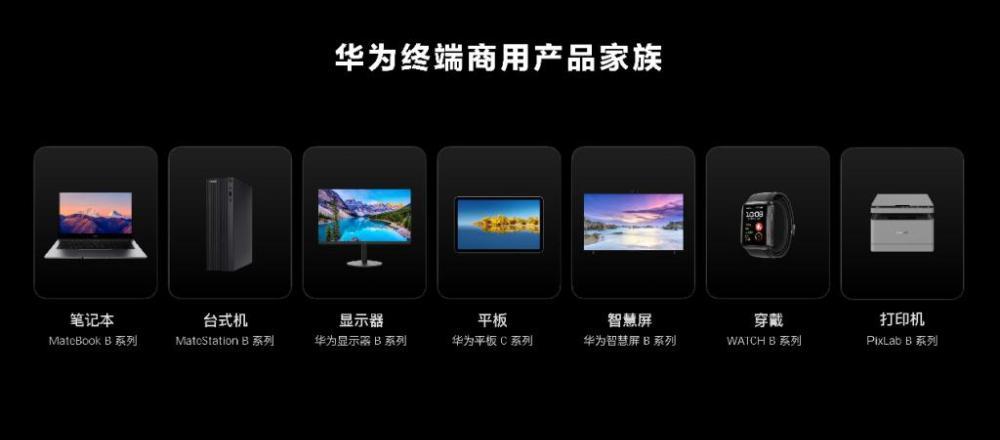The difficulties of Huawei's mobile phone business are well known, and the focus of attention from the outside world is not only Yu Chengdong's promise of "the return of the king of mobile phone business in 2023", but also how Huawei can stabilize the basic disk of consumer business before "returning".
On April 20, Huawei gave the answer. At the huawei terminal commercial new product launch, Yu Chengdong announced that the "Huawei consumer business", which has gone through a decade of road, was officially renamed "Huawei terminal business", and Huawei will fully enter the commercial field.
From the name point of view, the "terminal" accommodates a wider user base, and also includes commercial users such as governments and enterprises on the basis of "consumers".
Removing the name "consumer" and saving the "consumer business"?

Consumer businesses are rapidly losing consumers
Since 2018, among Huawei's three major businesses, the consumer business has become the most important source of revenue for three consecutive years. By 2020, the consumer business will account for 54% of Huawei's overall sales revenue. The bulk of the consumer business is precisely the mobile phone business that has suffered the most from the chip ban.
In 2021, Huawei only released three new mobile phones, and the annual shipment volume was only about 30 million units, which was surpassed by Rongmi OV.
Huawei's consumer business recorded sales revenue of 243.4 billion yuan in 2021, lower than the operator's business of 281.5 billion yuan, down 49.6% from the previous year.
Clearly, Huawei's consumer business is rapidly losing consumers.
The commercial market has become a new breakthrough
In December 2020, Huawei released the first desktop, the Huawei MateStation B515 for the government, enterprises and other commercial markets. However, at that time, Huawei did not focus on this area, and did not make much progress in the commercial market since then.
Until the April 20 conference, Huawei launched seven new products for the commercial market, such as laptops, desktops, monitors, printers, tablets, smart screens, and smart watches.
Yu Chengdong's "comprehensive entry into the commercial field" has obviously been implemented.
These seven products can basically be found in Huawei's previous consumer terminals, notebook computers, smart screens, smart watches and printers and other Huawei has launched consumer products. Therefore, it is not difficult for Huawei to move to a commercial market with generally lower performance and configuration requirements.
On the other hand, these seven products are also optimized for commercial users, such as the commercial desktop MateStation B series chassis is only 8L, only 1/3 of the size of the traditional chassis, suitable for small and crowded desks; the enterprise customized version of the smart watch WATCH B series is mainly for special industry practitioners and special application scenarios, can provide enterprises with digital health management, such as the medical and health industry.
Overall, their main feature is to meet the needs of commercial users for safety, stability and durability, so there is no need to adopt the most top-of-the-line configuration.
At the same time, because it is a commercial user such as the government and enterprises, and its purchasing power is relatively strong, if Huawei can successfully gain a foothold in the commercial market, it can provide a relatively stable source of income.
Therefore, the significance of the name change is not to abandon "consumers", but to expand the target user base, so that both consumers, the government, and enterprises can be summarized in it, so that Huawei can make a strong point.
Compete head-on with Lenovo
In the domestic government and enterprise market, Lenovo has a long-term high market share in the desktop field. There is unconfirmed news that Lenovo's share in domestic government and enterprise procurement is more than 80%.
Obviously, Hua has fully entered the commercial field for this time, and the desktop in the face of government and enterprise customers will also be the main product, and the head-on competition with Lenovo is inevitable.
At present, Huawei's brand appeal in the government and enterprise side is not weaker than that of the consumer side, and the desktop is already a fairly mature product, and it is difficult for Lenovo to have any core competitiveness.
On the other hand, whether it is product strength, national feelings, or influence on China's business community, Huawei is not weaker than Lenovo.
As two world-renowned technology companies, considering the public opinion storm encountered by the two companies in recent years, this round of competition may set off a bloody storm.
Produced by ZAKER Technology
Text / Liu Fan